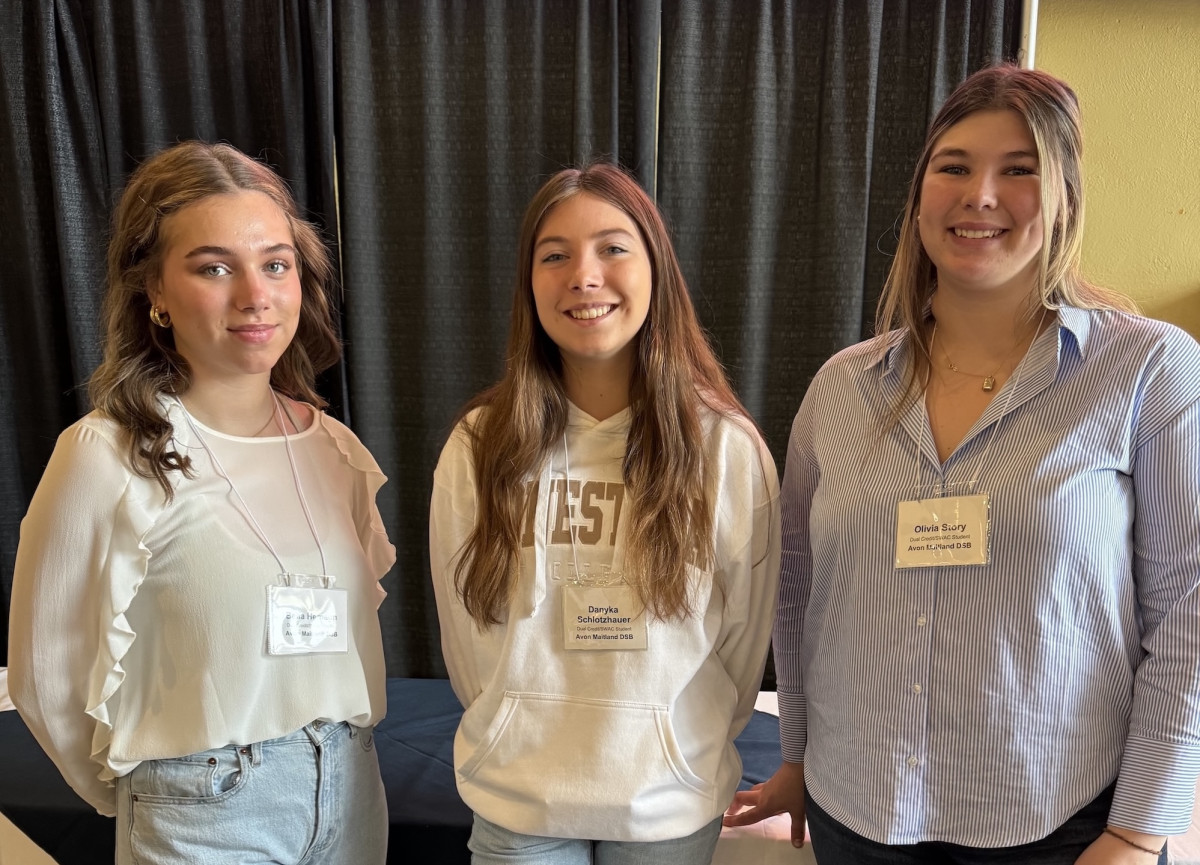
Avon Maitland District School Board
Introduction: Breaking Barriers in the Skilled Trades
Ontario is making major investments in housing, infrastructure, and energy, creating a growing demand for skilled tradespeople.
But there’s a problem–many skilled tradespeople are retiring. One in three were 55 years or older in 2021. And too few young people—especially young women—are lining up to replace them, despite high-wage career opportunities in trades like electrical work, plumbing, and welding. Despite government interest and employer demand, female participation in trades programs remains low.
“We were planning courses for the next year and I wanted to do a tech class, but I didn’t have space in my timetable,” said Olivia. “So they offered me this opening to the Dual Credit course, and I took it because I had always kind of enjoyed electrical work in the past.”
Solution: A Class of Their Own
They brought the idea to Rosie Hessian,
“I was already thinking about being an engineer. When I got my co-op, it was a chance to try either plumbing or electrical to see if that was actually what I wanted to do,” said Danyka. “I got a lot of experience that piqued my interest, including on job sites. Tom’s class showed me what it would be like if I got an apprenticeship.”
The program provides high school students with college-level training in electrical and plumbing work while building the confidence and skills they need to succeed. Students earn college and high school credits, learn transferable skills, and get exposure to career paths in high-demand sectors like powerline maintenance, welding, plumbing, and electrical work.
Results: Confidence, Careers, and Culture Change
The first all-female class launched in Semester 1, 2024-25 and quickly exceeded expectations. Students completed complex projects, worked with industry-level standards, and bonded as a supportive team. By the following semester, the classes were full again and outperforming the previous cohorts.
“Participating in the Dual Credit program for electrical and plumbing was a transformative experience,” said Bella Hemeon, who took the course in Semester 2, 2024-25. “I worked on real-world tasks like wiring circuits, installing plumbing systems, reading technical diagrams, and using industry-standard tools.”
“It was challenging at times, but incredibly rewarding,” Bella added. “I learned not only technical skills but also time management, problem-solving, and how to work effectively in a team. It felt empowering to succeed in a field that’s often male-dominated and to know I was paving my own path forward.”
In just three years, the AMDSB’s all-female and co-ed trades classes have become a success story—one that’s reshaping expectations and inspiring educators across Ontario.
Both female and male students in the programs have shown:
● Higher attendance and greater engagement than before
● Stronger performance on practical projects;
● And a clear interest in continuing into trades-related post-secondary programs and careers.
Three female alumni have already entered welding programs. Olivia is a powerline technician. Danyka will become an electrical apprentice. Bella is entering an Electronic Systems Engineering program. The Instructors say these students are job-ready the moment they graduate—with real experience, high-quality work skills, and the professionalism employers expect.
The program has also had a ripple effect on teachers. Tom admitted he initially doubted whether an all-female class could succeed, only to find himself redesigning the curriculum to keep up with the students’ pace and skill. “What I’ve done for the last five years when it’s been just young men isn’t working anymore,” he said. “Adding women has boosted performance for the entire class—the men and the women–so I had to raise the bar.”
Now AMDSB and Conestoga want to grow the program—and help others replicate it. They’re working to share student stories, speak at education conferences, and show that change is possible when students are given the space and support to lead.